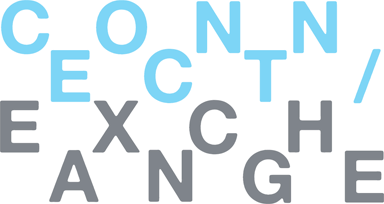This was my first visit to Chapter. Situated in a residential area a short walk away from Cardiff city centre it’s an impressive building hosting a gallery, cinema, theatre and a café/bar that was busy from early morning to late evening. The gallery presented a two-person show; intricate large-scale paintings by Helen Johnson’s and a poignant film by Megan Cope, two seemingly different bodies of work but connected through a common exploration of notions of identity at the backdrop of the colonial relationship between Britain and Australia. This thought-provoking exhibition felt refreshing and far from the safe and family friendly programmes adopted by so many public facing and community-oriented institutions.
Hannah Firth, director of visual art and programme had lined the week up with several studio and site visits. It is incredible valuable to share and discuss the work, and during the week I had chats with Joanne Bushnell director Aspex Gallery, Karen Mackinnon director Artes Mundi, Ali Roche producer at Spike Film and Video as well as site visits to G39, Spit and Sawdust and as well as a special tour of National Museum Cardiff by Nicholas Thornton Curator of Contemporary Art.
The original proposal for this project, to explore the idea of an institution in its widest sense, had been deliberately open and vague. Six months later, and a lot of thought about the project it had started to take shape. Originally I had thought of it as an exploration into organisational structures and human failure to uphold them. But with time I had become less interested in obvious critique and more focused on other kinds of narratives that could be drawn out from institutions; mundane everyday activities, interactions and the buildings that host the institution.
I also had though of a few filmic references, for example I’m keen to explore the observational approach and framing of individuals within the institutions in Fred Wiseman’s documentaries (At Berkeley, 2013 and National Gallery, 2014). But unlike Wiseman I want to turn away from the people talking, focusing instead on non-verbal interaction, what happens to an institution, a workplace, when the words are stripped away?. Another very different reference is Philippe Parreno and Douglas Gordon’s Zidane: A 21st Century Portrait (2006) in the way it captures an individual closely at work from a distance. But instead of celebrating the athleticism of a sports person I want to elevate the little to none physical activity of working life.
After the first intensive week in Cardiff I am super excited to return in October to continue the project.
Hwn oedd f’ymweliad cyntaf â Chapter. Wedi’i leoli mewn ardal breswyl, daith gerdded fer o ganol dinas Caerdydd, mae’n adeilad trawiadol ac yn gartref i oriel, sinema, theatr a chaffi / bar a oedd yn brysur o fore tan gwyn tan nos. Roedd yr oriel yn cyflwyno sioe dau berson: paentiadau cymhleth ar raddfa fawr gan Helen Johnson a ffilm lawn emosiwn gan Megan Cope, dau gorff o waith ymddangosiadol wahanol ond wedi’u cysylltu gan archwiliad cyffredin o syniadau am hunaniaeth yng nghyd-destun y berthynas wladychol rhwng Prydain ac Awstralia. Roedd yr arddangosfa ddiddorol hon yn brofiad adfywiol i mi ac yn wahanol iawn i’r rhaglenni diogel a theuluol sy’n cael eu mabwysiadu gan gymaint o sefydliadau cymunedol a chyhoeddus.
Roedd Hannah Firth, cyfarwyddwr rhaglen celfyddyd weledol Chapter, wedi trefnu nifer o ymweliadau i stiwdios a safleoedd gwahanol ar gyfer fy wythnos yng Nghaerdydd. Mae’r cyfle i rannu a thrafod gwaith yn anhygoel o werthfawr ac yn ystod yr wythnos cefais gyfle i sgwrsio gyda Joanne Bushnell, cyfarwyddwr Oriel Aspex, Karen Mackinnon, cyfarwyddwr Artes Mundi, y cynhyrchydd Ali Roche o Spike Film & Video ac i ymweld â G39 a Spit and Sawdust ac i fwynhau taith arbennig i Amgueddfa Genedlaethol Cymru, Caerdydd, yng nghwmni Nicholas Thornton, Curadur Celfyddyd Gyfoes.
Roedd y syniad gwreiddiol ar gyfer y prosiect hwn – archwilio’r syniad o sefydliad yn ei ystyr ehangaf – yn fwriadol agored ac amwys. Chwe mis yn ddiweddarach, ac ar ôl llawer o waith meddwl, fe ddechreuodd y prosiect siapio. Yn y lle cyntaf, roeddwn i wedi meddwl amdano fel archwiliad i strwythurau sefydliadol a methiant pobl i gynnal y rheiny. Ond, wrth i amser fynd yn ei flaen, ciliodd fy niddordeb mewn cyfleu beirniadaeth amlwg a chanolbwyntio’n hytrach ar fathau eraill o naratif y gellid eu defnyddio i gwmpasu sefydliadau: gweithgareddau bob dydd, rhyngweithio a’r adeiladau sy’n cynnal sefydliad penodol.
Roedd gen i ambell gyfeiriad ffilmig yn fy meddwl – er enghraifft, roeddwn yn awyddus i archwilio’r dull arsylwadol a’r modd y caiff unigolion eu fframio oddi mewn i sefydliadau yn ffilmiau dogfen Fred Wiseman (At Berkeley, 2013 a National Gallery, 2014). Yn wahanol i Wiseman, roeddwn am ganolbwyntio nid ar bobl yn siarad ond ar ryngweithio di-eiriau, yr hyn sy’n digwydd i sefydliad, gweithle, pan gaiff y geiriau eu tynnu oddi yno. Cyfeiriad arall a gwahanol iawn yw gwaith Philippe Parreno a Douglas Gordon Zidane: A 21st Century Portrait (2006) a dull arbennig y ffilm honno o gyfleu unigolyn – mewn manylder ac o bellter. Ond yn hytrach na dathlu gallu corfforol pêl-droediwr, fel yn yr achos arbennig hwnnw, dw i am geisio dyrchafu gweithgarwch corfforol cymharol ddisymud byd gwaith.
Ar ôl wythnos gyntaf ddwys yng Nghaerdydd, dw i’n edrych ymlaen yn arw at ddychwelyd ym mis Hydref i barhau â’r prosiect.


